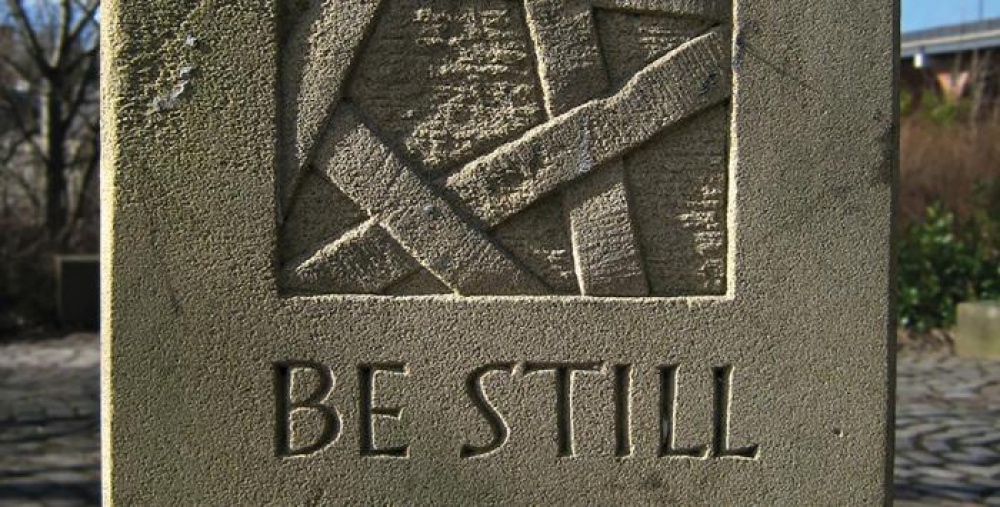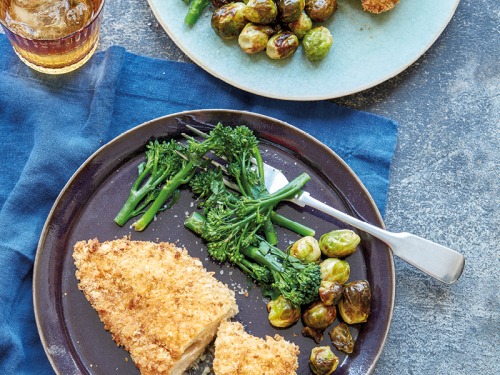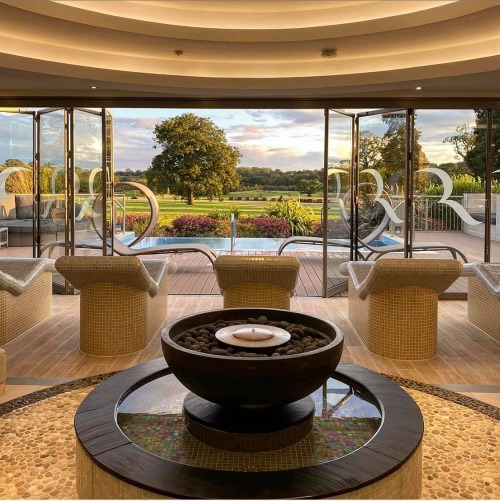The Traditional Style of Folk Dancing that Originated in the North East

Rapper sword dancing is a traditional style of folk dance that originated in the North East in the 19th century, and a small but passionate band of dancers has been keeping the tradition alive ever since
Without breaking this chain, the dancers must weave in and out of one another, intertwining the swords to create what are called locks and breastplates, sometimes even jumping or somersaulting over the swords. During this, they also engage in fancy footwork, stepping in a way that is reminiscent of traditional clog-dancing.
Vince Rutland, a long-standing member of the Swalwell-based rapper group the Sallyport Sword Dancers, explained some of the history of this unique tradition. ‘So much is lost in the mists of time, but we do know that in the 19th century there was a lot of competition in the mining community – whippet racing, clog dancing and indeed sword dancing,’ explains Vince.
‘There would be competitions with cash prizes, so it’s always been competitive. A lot of communities had their own team, and they would go out and dance, sometimes to raise money for neighbours or colleagues in difficulty, or sometimes just to raise money for beer,’ he laughs.
The original dances from the North East were first written down by Cecil Sharp, a man who is revered as the Father of the English revival of folksong and dance. After his visit to Northumberland around 1910, he compiled his findings into a book entitled The Sword Dances of Northern England, where he detailed the by then near-extinct rapper dance, supposedly leading to its revival in the area.
‘Cecil went all over the place collecting songs and dances,’ explains Vince. ‘The first place he went to see sword dancing was Swalwell, in Gateshead, which is actually where my team, Sallyport Sword Dancers, practise.
This was the first time that he’d written a rapper sword dance down, and it’s also the first time anybody can find the word “rapper” being used in this context. There’s a thought that it referred to the way the handles of the steel blades had wrappers on the ends – string tied around them so you can hold them – but no one really knows.’
The rapper swords themselves replaced the rigid sword used previously. No one knows how it was discovered either, but it seems likely that it was by accident, with mining tools being adapted to use as swords, and later on, it is known that teams used bed laths or filed down saw blades to create rappers.
High-quality steel was expensive in the 19th century, and it would have been beyond the means of a coal miner to purchase specifically made rappers, so recycling old mining tools was their solution. The North East rapper dance is very different from traditional longsword dances due to the flexibility of the rappers. They’re made from a strip of spring steel around one inch wide and 18–28 inches in length with handles at both end, one fixed and one with a swivel attachment.
The word ‘rapper’ first used by Cecil stuck, and since then the dance has been known as such. Once the First World War broke out, the number of teams dancing understandably diminished, and although interest picked back up slightly in the period between the wars, it wasn’t until almost the ‘70s and ‘80s that it was really revived. Although only one traditional team remains (the High Spen Blue Diamonds), plenty of others have sprung up since the ‘50s and have been going strong since.
Vince’s team Sallyport Sword Dancers were formed in 1969, so this year they’ll be celebrating their 50th anniversary, while Newcastle Kingsmen are celebrating their 70th having formed in 1949, after a group of Newcastle University students initiated a miniature revival as a Rag Week stunt, and the members went onto become Newcastle Kingsmen, clearly hooked on the dance. There are plenty of other local teams, including Star and Shadow, Hexham Morrismen, and the Durham University Rapper Team.
As the original rapper dancers were coal miners, they were generally also all men. Now, however, women form a large proportion of the active teams, and enjoy great success too. Star and Shadow, one of the co-organisers of this year’s Dancing England Rapper Tournament (DERT), are an all-woman team and have been dancing for 12 years, and last year’s winners and finalists at the tournament were all-women teams.
Competitions have always been a part of rapper sword dancing tradition, as Vince explains more for us. ‘There’s an annual event called Dancing England, which is a celebration of English folk dance traditions and has been revived recently, with this year’s being held on 26th January,’ says Vince. ‘As a spin-off from this, someone devised the idea of DERT, which I think has been going since the early 1990s – I’m the only person to have competed in every one, and I’ll be competing in this one too.’
Rapper dancing is not a very well known activity, and usually people get into it via friends of friends, as Vince did himself after seeing a group perform in a pub 40 years ago. ‘We do like to follow the traditional sword dancing style of performing in public houses,’ he says. ‘The teams in the old days would dance around the pubs to raise their beer money, and that’s something we like to do too.’
Indeed, DERT is based around this tradition, with teams dancing in five different pubs throughout the day. As Sallyport Sword Dancers and the Newcastle Kingsmen are both celebrating milestone anniversaries this year, they thought it would be fitting to bring rapper dancing home for this year’s tournament.
The event will take place on Saturday 6th April in venues around Newcastle, including The Old Coal Yard, The Cumberland Arms, The Cluny, Brinkburn Street Brewery and The Free Trade Inn. Teams will be arriving from all over the country, including Edinburgh, London and Bristol, and although there aren’t any international teams this year, they also get groups coming over from Denmark and even America.
The performances in the pubs, from late morning until around 4.30pm, are free for anyone who wants to go and watch – the dances performed nowadays have come a long way from the originals noted down by Cecil Sharp.
‘These days, the standard of dancing is phenomenally high, a lot better than it was 100 years ago,’ says Vince. ‘The dancers form a circle and from that starting point, they move between each other without letting go of the swords, making patterns and shapes. Each movement is called a figure, so teams make up their own figures, and many of them are quite impressive.
‘So that’s one half of the wow-factor. But at the same time they’re doing fancy stepping with their feet in time with each other, and you’ll notice an instant connection with tap-dancing. It’s flashy footwork, flashy figures, and at the end they always knit the swords together and tie what we call a lock and display that to the audience,’ explains Vince.
This ‘lock’ is in the shape of a star, and it takes a great deal of skill to manoeuvre the swords and five bodies in such a way without tangling yourself up. ‘Most teams practice weekly, although having said that, I taught a workshop of 15 beginners last weekend and in an hour and a half, they were able to get through four or five different movements without tying themselves up in knots,’ says Vince. ‘But you can’t learn it that quickly – I’ve been dancing 40 years and I’m still learning.’
As well as the five dancers with the rapper swords, there are sometimes two additional members of the group. ‘These characters are called Tommy and Betty – if you look back at old photographs, there’d be a gentleman dressed in quite smart clothes and then another guy dressed as a woman,’ explains Vince. ‘They did a semi-comic routine designed to work around the dancers, amuse and entertain the audience and, more importantly, get money from them! They’d be cracking jokes and ‘Betty’ would be going around with a collection box.’
And of course, no dance would be anything without music. Although a North East tradition, rapper dances are usually performed to Irish tunes. It’s thought that the date of the introduction of the rapper sword coincided with that of mass Irish migration to the British industrial areas, so it’s likely that they’ve always been performed to Irish music, which is more lively than the Northumbrian equivalent. Popular instruments include fiddle and wind instruments, but there is a history of more unusual instruments being employed, including Northumbrian smallpipes and Highland pipes.
If it all seems like a lot to take in, spare a thought for the judges of DERT, who must choose between the teams of skilled dancers to crown one as the winner. After the performances in the pubs throughout the day, the teams will be heading to the Tyne Theatre & Opera House.
‘Here, there are a couple more competitions,’ says Vince, ‘including the Veterans’ Competition, where all the dancers’ ages add up to 250 years or more, and the Traditional Competition, where all the dances originate from the North East from the original notations, so they’ll be harking back to the old days of rapper dancing.’
After all 23 teams have danced again on stage, the judges must make their final decision. ‘They use quite set judging criteria that have been worked out over the years,’ explains Vince. ‘The judges look for how well the dancers handle their swords, how good their stepping is, how well they present themselves when coming on and off stage, how smart their kit is, and what the music is like. Then the final category is the “buzz factor” – how exciting do they make it for the audience – and then they put all of that together and come out with the winners.’
Once the winners are announced, it’s time for the most important part of the evening – a few pints in the pub. On the following Sunday – hangovers permitting – the the winners will hold a workshop for anyone interested in rapper dancing who wants to give it a go. And for those interested in the history of the dance, DERT are organising a coach tour around some of the pit villages, with demonstrations of the original dances (including Winlaton, Swalwell and Newbiggin-by-the-Sea).
www.dert2019.co.uk







